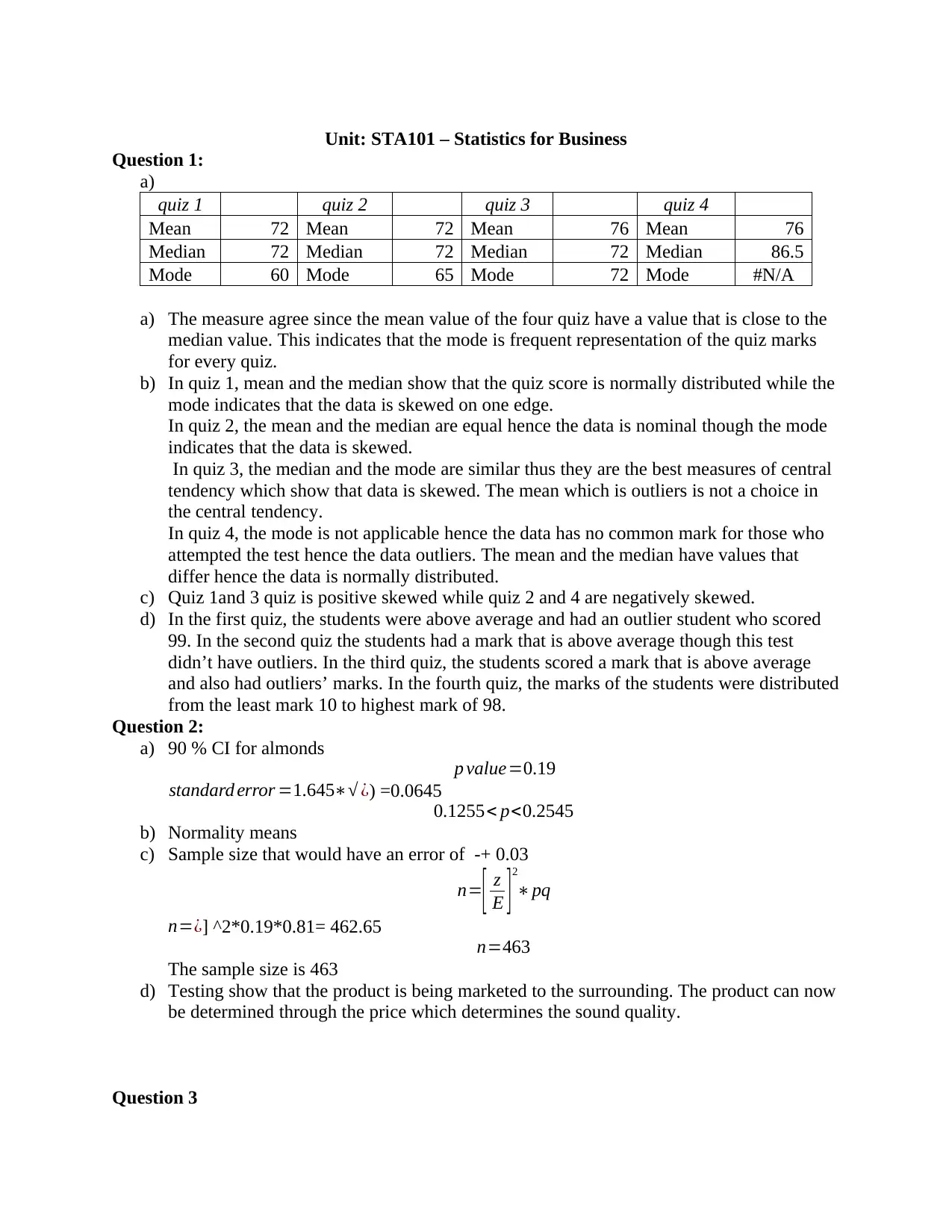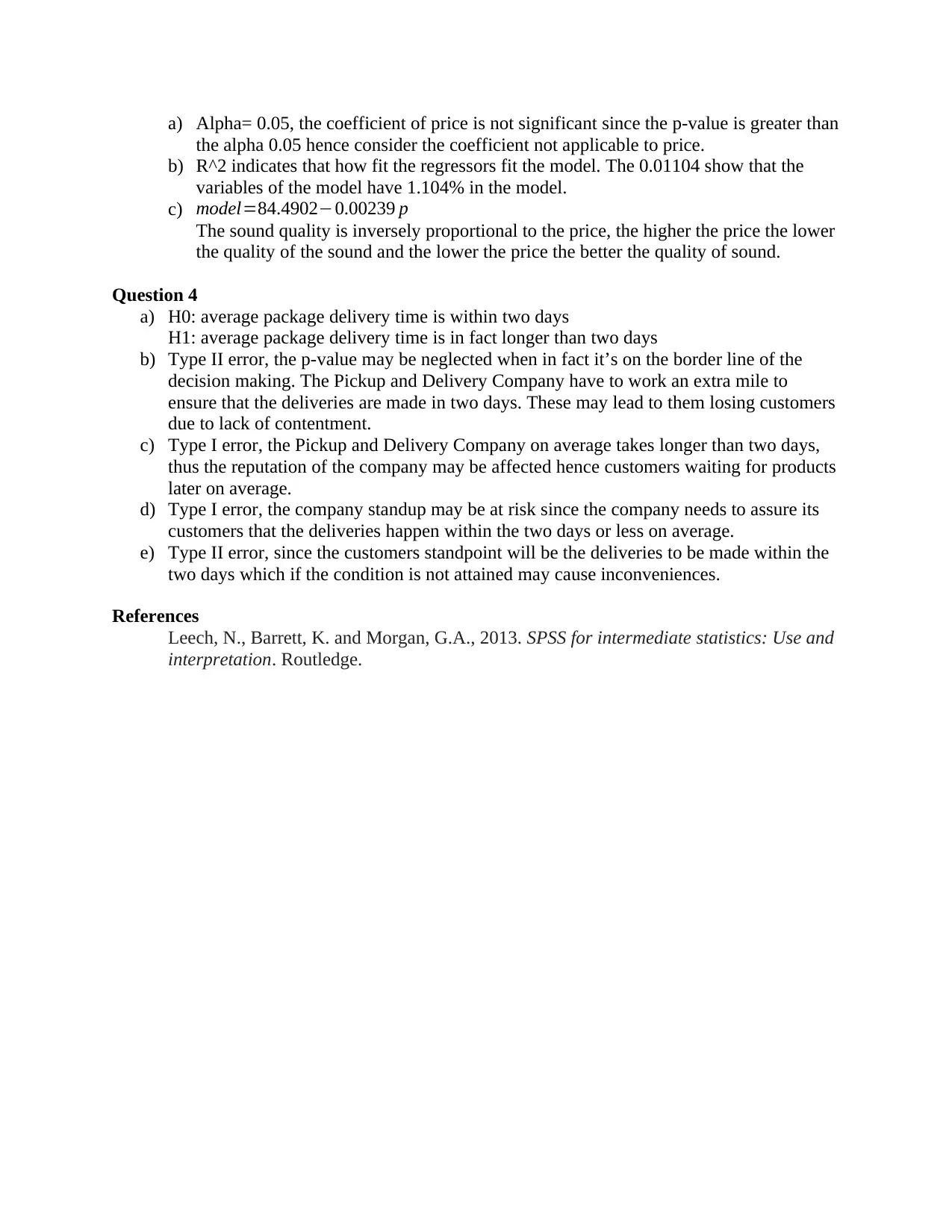STA101 Statistics for Business: Detailed Quiz Analysis and Testing
VerifiedAdded on 2023/06/11
|2
|734
|311
Homework Assignment
AI Summary
This assignment solution for STA101 Statistics for Business covers a range of statistical concepts through the analysis of quiz data and hypothesis testing. The solution includes calculating the mean, median, and mode for four different quizzes, discussing the agreement and strengths/weaknesses of these measures of central tendency, and determining the skewness of the data. Additionally, the assignment involves constructing a confidence interval for a proportion, determining the required sample size for a given margin of error, and interpreting the significance of a coefficient in a regression model. Hypothesis testing is addressed by formulating null and alternative hypotheses, as well as identifying Type I and Type II errors in the context of package delivery times. The document provides detailed calculations and explanations for each question, offering a comprehensive understanding of the statistical methods applied. Desklib provides a platform for students to access this solution and explore a wealth of other academic resources.
1 out of 2








![[object Object]](/_next/static/media/star-bottom.7253800d.svg)